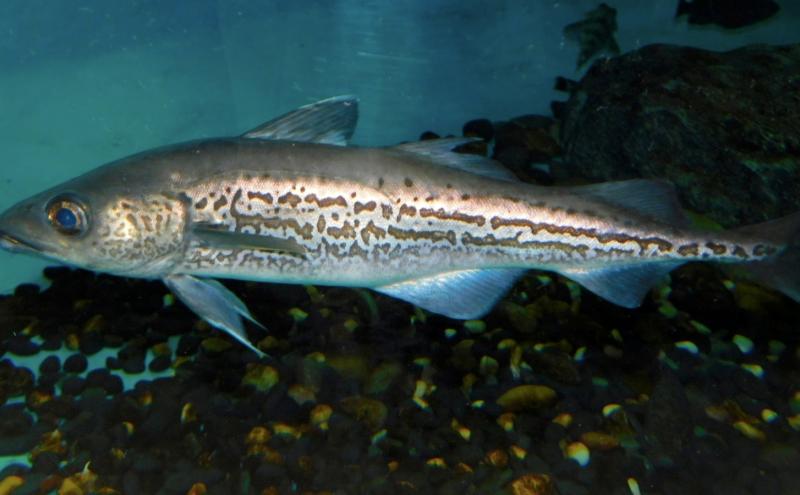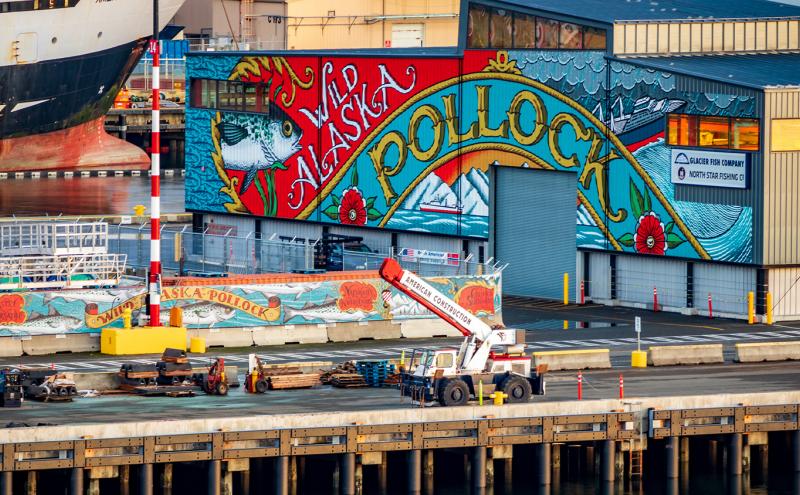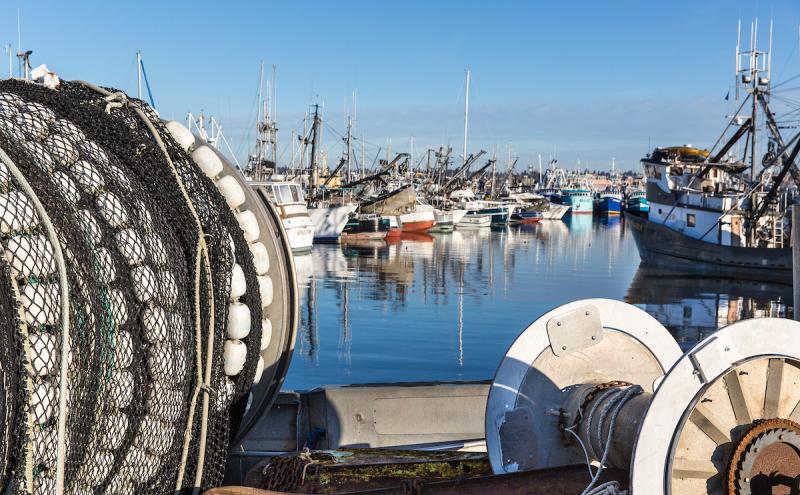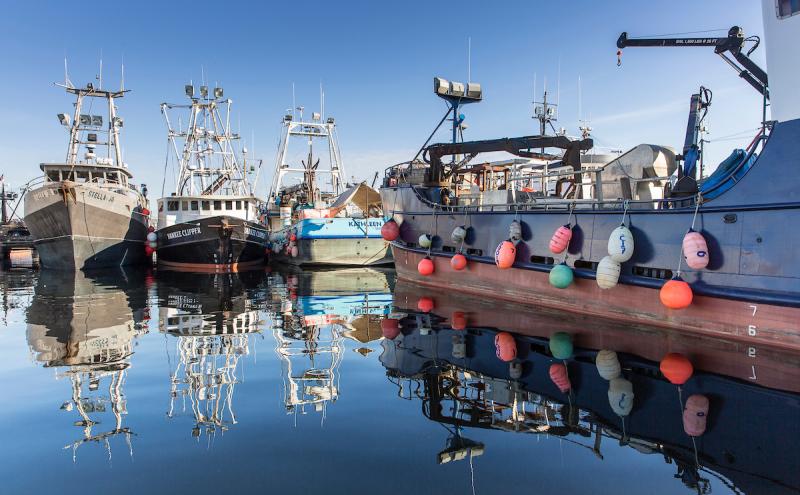
The factory trawlers, or fish processing vessels, of the North Pacific Fishing Fleet are back in Seattle after four months of harvesting pollock in the Bering Sea and Gulf of Alaska. The docks at Terminal 91 are buzzing with activity as crews unload their recent harvest and prepare to set sail again in late May.
For more than 100 years, the North Pacific Fish Fleet, homeported at Terminal 91 and Fishermen’s Terminal, has fed the world and the economies of the Pacific Northwest and state of Alaska. Our region supplies 13% of the total U.S. commercial fisheries harvest by value. Commercial fishing activities at the Port of Seattle generated more than $671.2 million in business output in 2017 and supported 7,200 jobs.
Learn more about the North Pacific Fishing Fleet at Terminal 91 that helps fuel our economy and fill our bellies.
1. What does the fleet harvest?
The North Pacific Fishing Fleet based out of Terminal 91 harvests pollock, hake, yellowfin sole, and other flat fish. The bulk of the annual harvest is pollock, a whitefish commonly prepared as breaded fillets or processed into surimi (imitation crab). Pollock is versatile, highly nutritious, and comes from the world's largest sustainable fishery.
Fun fact: Pollock is used in the McDonald's famous McFish sandwich.
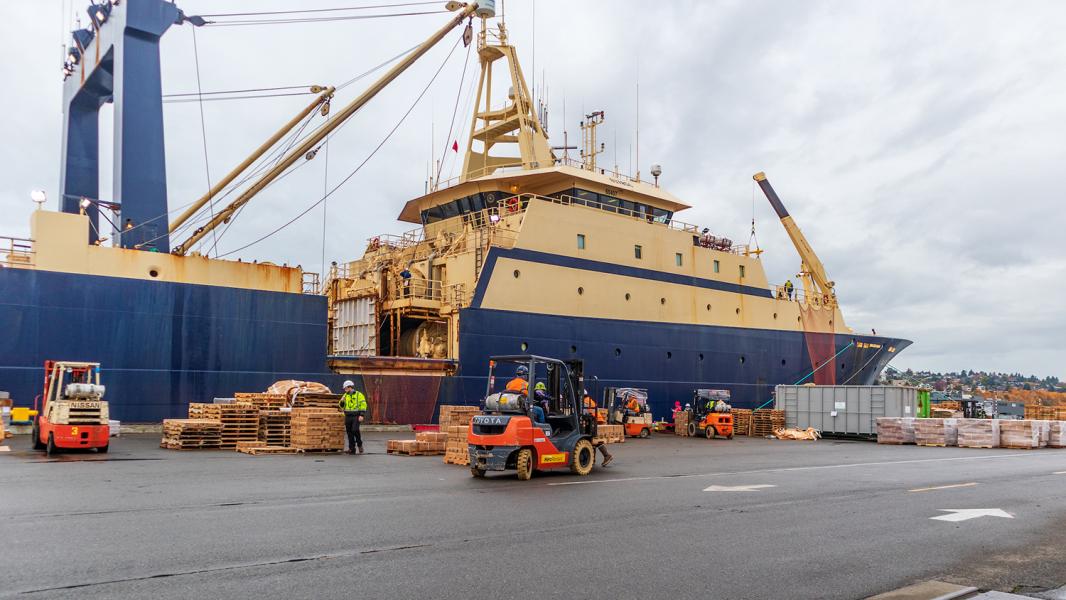
2. When is the fleet at Terminal 91?
The fleet comes and goes throughout the year, heading north during these optimal harvest times:
- Mid-January through mid-April: Pollock Season A
- Mid-May through late June: Hake
- June-October: Pollock Season B
- August-October: Pollock Seasons C and D
- September-November: Hake
3. What types of vessels make up the fleet?
The fleet is made up of commercial factory trawlers, also known as fish factories or catcher/processors. These vessels are massive, ranging in size from 250 feet to over 350 feet long, and equipped to process fish into frozen fillets within hours of being caught. Onboard processing plants employ hundreds of factory workers who, with the aid of sophisticated machinery, produce frozen fish blocks, fillets, roe, surimi, fish oil, and fishmeal.
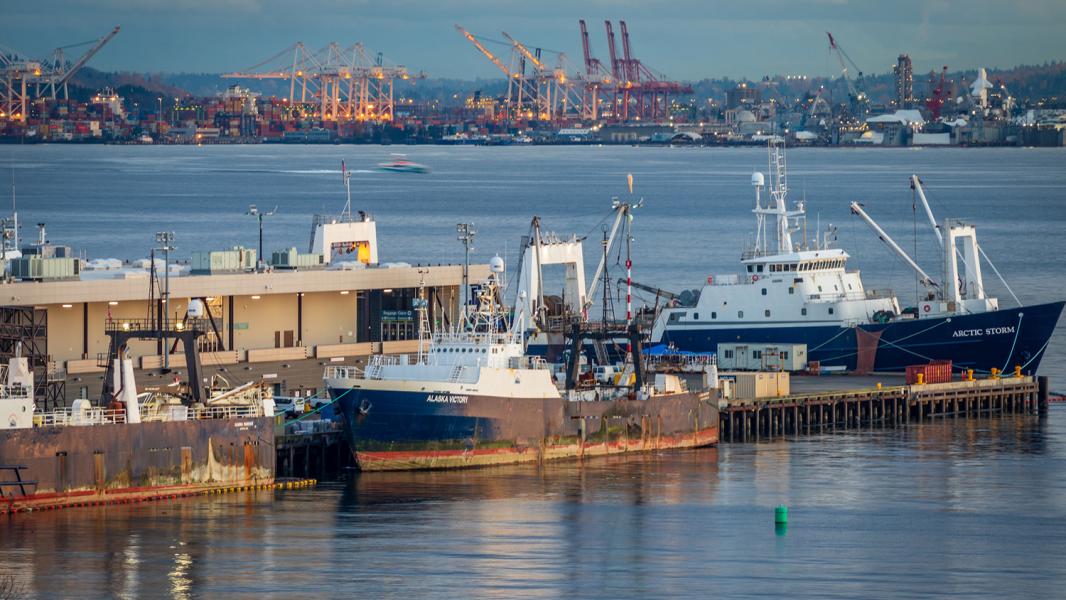
4. How are fish harvested with trawlers?
Trawling involves towing a large, cone-shaped net behind a vessel to catch schooling fish. The net, which can be several hundred feet long depending on the vessel, is connected to the boat by industrial-strength cables, and the net opening is spread by two large boards called otter boards. As the boat pulls the net through the water column, fish are herded within the wide "mouth" of the net. Eventually the fish tire and drop back into the closed, narrow end of the net where they are finally caught. Once the net reaches capacity, that catch is mechanically retrieved to the boat deck, where crew is standing by to begin processing.
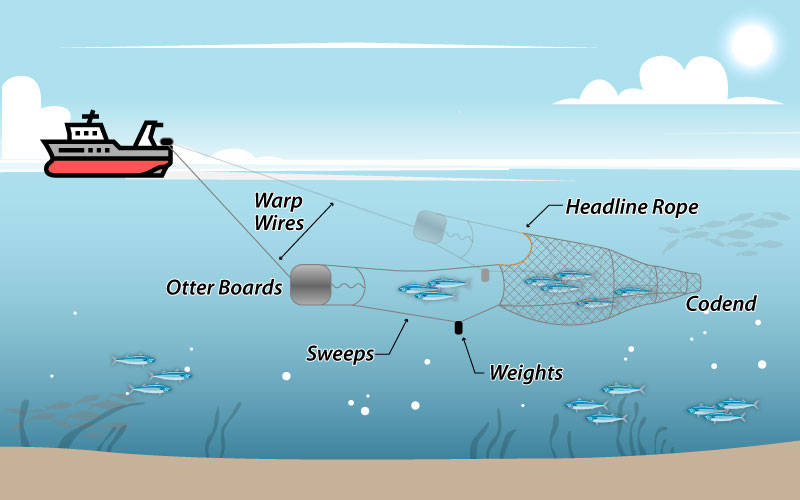
What is the largest vessel in the fleet?
The Alaska Ocean, owned by Seattle-based Glacier Fish Company, is not only the largest factory trawler at Terminal 91, but the largest in the entire U.S. fishing fleet! At a whopping 376 feet long (slightly longer than the length of a football field), the ship has the capacity to catch and process 225 tons of fish every day.

